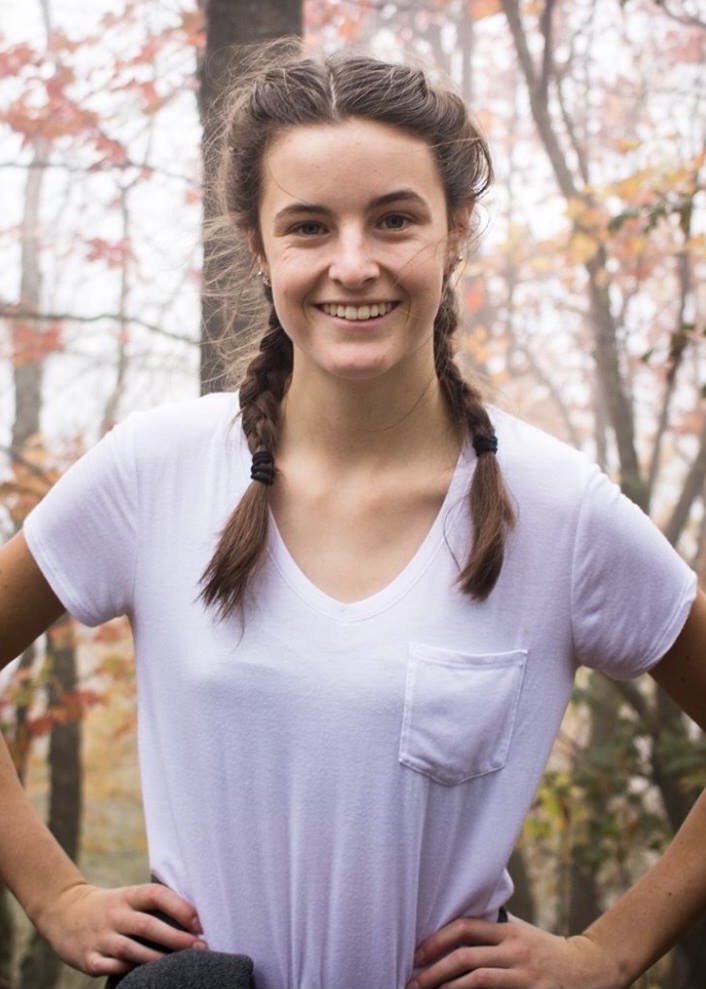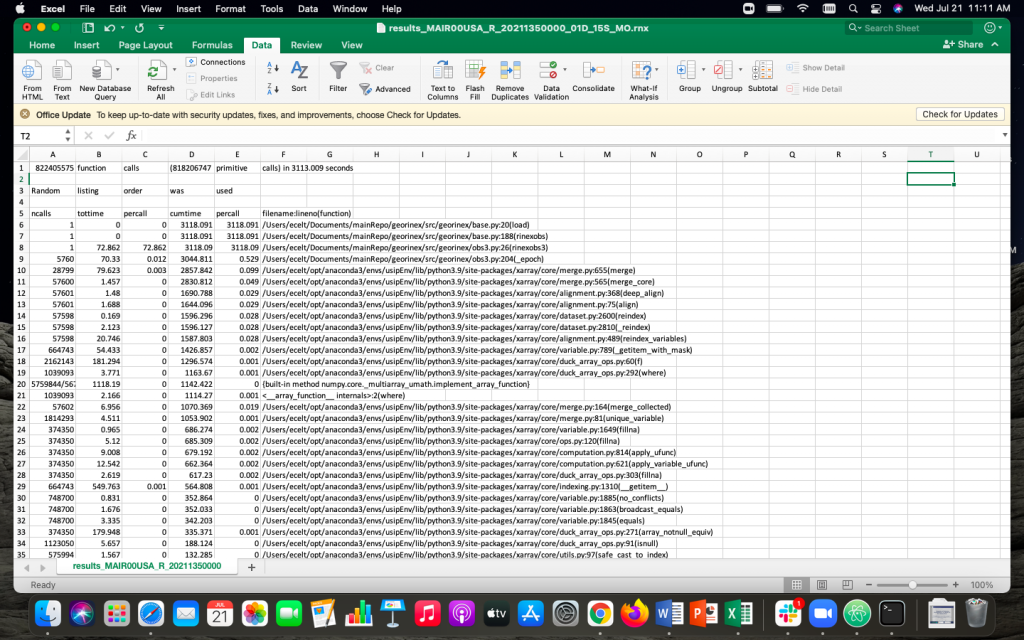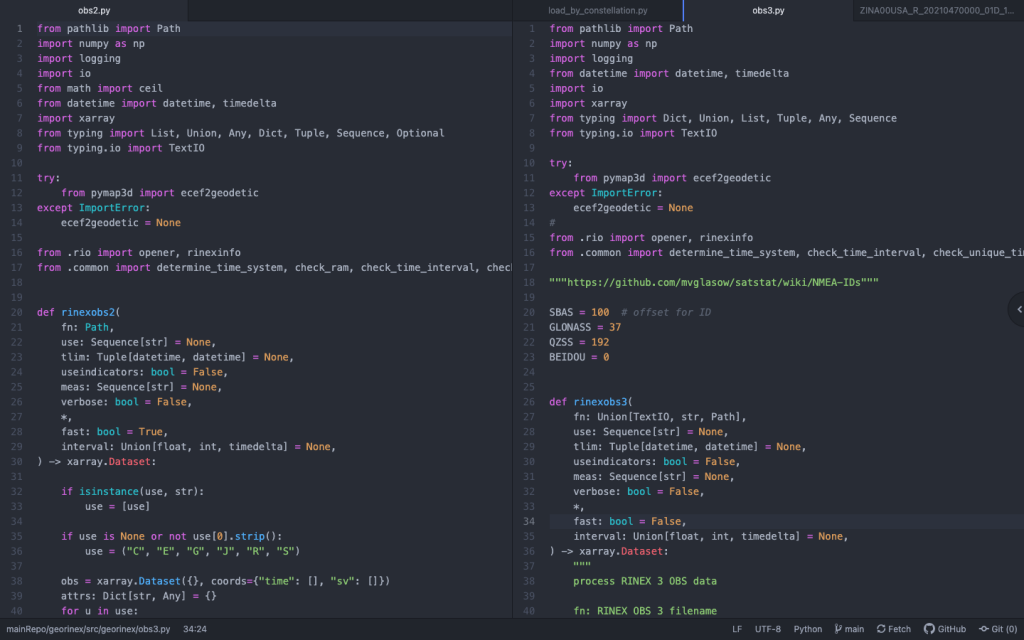This summer we’re introducing interns in the RESESS, Geo-Launchpad, and USIP programs to shine a spotlight on the projects they are completing throughout these 11-week internships and on their interests in geoscience.
Jordan Mazur is a recent graduate of Skidmore College, where she studied math and computer science. This September, she will be joining the Los Alamos National Laboratory as a post baccalaureate student. An Earth science field study program sparked Jordan’s interest in geology because there are so many mathematical and programming applications of Earth science.
Jordan has loved math since preschool, so when she entered Skidmore College as a first-year student, she knew that she wanted to study math. She initially resisted studying computer science, but was required to take an introductory course for her math major. She enjoyed the class so much that she took the second course in the sequence, and then decided to minor in computer science. That minor turned into a double major in math and computer science! This summer, Jordan was searching for an internship that allowed her to approach Earth science through a computer science lens. After learning about the projects happening at UNAVCO, the USIP internship sounded like a perfect fit for her interests.
UNAVCO’s Tim Dittmann is supervising Jordan this summer. UNAVCO maintains a large archive of RINEX files, which is the type of file that is almost universally utilized to store satellite navigation data. UNAVCO is transitioning to cloud data storage, so the RINEX files need to be converted to a file type that is compatible with common cloud servers. There is an open source Python program called GeoRinex that converts RINEX files to common cloud-compatible data types, such as netCDF and HDF5 files. Converting RINEX 3 files via GeoRinex can be a long and tedious process, though, taking up to an hour to convert one file. This time commitment is unrealistic to convert the amount of data that UNAVCO has stored and continues to collect.
Jordan and her mentor are working to make improvements to GeoRinex. Jordan first began this project by researching how satellite data is collected and how satellites perform positioning. She then profiled the existing code in order to identify what steps of the program are taking so much time when a RINEX file is being converted. As of mid-July, Jordan began investigating the existing code to determine what alterations could be made to improve the program for UNAVCO’s needs. The revised code may also be uploaded as open source, so that other organizations facing similar issues are also able to more quickly and efficiently convert their files.
Although Jordan has learned much about coding, she has also completed an ample amount of research into how satellites position and collect data, as well as how errors are processed and how satellites are used for Earth science applications such as earthquake detection. She has also explored the ethics and processes for open source software development, since this is her first time working with a large, open source software package.
Q&A
- What has been your favorite part of the USIP program so far?
Probably the level of independence. I feel like within my project, I have a lot of say over what direction we take it and what I work on everyday, what I get to spend my time on. It’s sort of driven by what is exciting to me and it feels like they really care about me and my learning through this process more than anything and that’s really really cool to me.
- What have you gained from your mentorship with Tim Dittmann?
I’ve learned a lot because I didn’t know anything about satellites, the GNSS domain, even the coding stuff has been really helpful. He also knows about this next job and what we’re doing, which is kind of similar, so he’s been really thoughtful about what could help me be best prepared for my next job, which I think is really awesome. It’s just great to have someone I can Slack message if I have a question or we meet twice a week and just chat. Sometimes I have questions, sometimes we need a new game plan. We definitely can collaborate a lot.
- How does this internship fit into your future goals or help you achieve them?
In terms of an immediate goal, I wanted to be a more competent software engineer… [In] my undergrad… I didn’t feel like I had a lot of experience working on big software packages, so I think I learned how to code and learn how to come up with ways to solve problems, but I didn’t learn a lot about the actual ins and outs of working on software in the real world. That’s been one of my main goals with this internship. I think also just learning to trust myself a little bit to work independently has been really good for me.
Jordan is excited to join the Los Alamos National Laboratory as a post baccalaureate student where she will be completing similar software development projects focused on data processing from satellites. Eventually, she plans to attend graduate school, likely for scientific computing or applied mathematics, and continue to research Earth science from a computer science perspective. This summer after completing her internship, Jordan hopes to go to the Grand Teton National Park to climb the Grand Teton.
Written by:
- Lucia Bellino, USIP Intern
- Posted: 6 August 2021
- Last updated: 2 August 2021
- Tags: internships, software development





